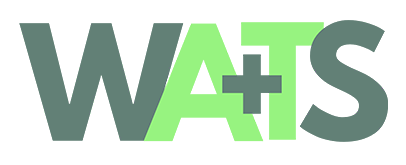Cost Savings from rightsizing waste vendor services
REAL ESTATE CASE STUDY
The return to office led to many operational changes, including vendor pricing negotiations impacting waste management.
A New York City-based commercial real estate (CRE) company managing 15 million square feet of commercial and residential property manages its waste data with WATS. By conducting a comparative analysis of multiple waste data sources, WATS evaluated if the client’s waste vendors' costs aligned with their waste generation.
WATS’ analysis of the invoicing data offered a potential 19% reduction in waste collection expenses.
"This is an opportunity to save money on waste removal and reduce our impact on the environment”
— VP of Facilities for NYC Real Estate Owner
19%
Cost savings
$159k
Projected annual savings
BUSINESS DETAILS
Commercial & residential real estate
15M ft² of property
CASE STUDY DETAILS
9 mixed-use sites, mostly office spaces
Motivated by sustainability goals
Vendor Services
The waste vendor collected multiple waste streams from 9 Commercial mixed-use sites, mostly office space. The waste streams included:
Recycling (glass, metal, plastic),
Mixed paper/cardboard
Compost/food waste
Trash
Vendor Data Sources
Vendor Billing
Site by site monthly invoices indicated waste generation by stream, but they were consistent month over month without variation, which is typical practice for NYC vendors.
Vendor Waste generation Data
Many CRE operations now require detailed waste generation data for ESG reporting, and waste vendors are providing it. Vendors generally conduct one waste survey a month per building and extrapolate the results to estimate the tonnage generated for each waste stream for the month.
WATS Analysis
When WATS compared these data sources, we discovered the vendor was invoicing for 35% more waste than was actually being generated, based on their monthly tonnage reports. As a result, the client was overpaying by an average of 19%.
How we did it
WATS gathered the trailing 12 months of invoices and monthly tonnage data from vendors
NOTE: Invoices are typically delivered as static PDFs and typically use volumetric units, while estimated monthly tonnage data is typically delivered in Excel sheets that are not structured to be easily pivotable.
WATS digitized the unstructured data
WATS converted the invoices volumetric data into weight
WATS did a comparative analysis between the two data sources
WATS highlighted the discrepancies by site and averaged out the difference
The findings from this exercise told WATS that less tonnage on average (as estimated by the vendor) was being generated compared to what they were being billed for. The client can achieve 19% savings by working with the hauler to right-size their invoices.
WATS recommended that this CRE work with their waste hauler to continue using WATS to compare the data sources. And to continue to adjust their invoicing quarterly, using the average tonnage from the past 12 months. This approach ensures that as waste reduction efforts improve, the client continues to see ongoing savings.

